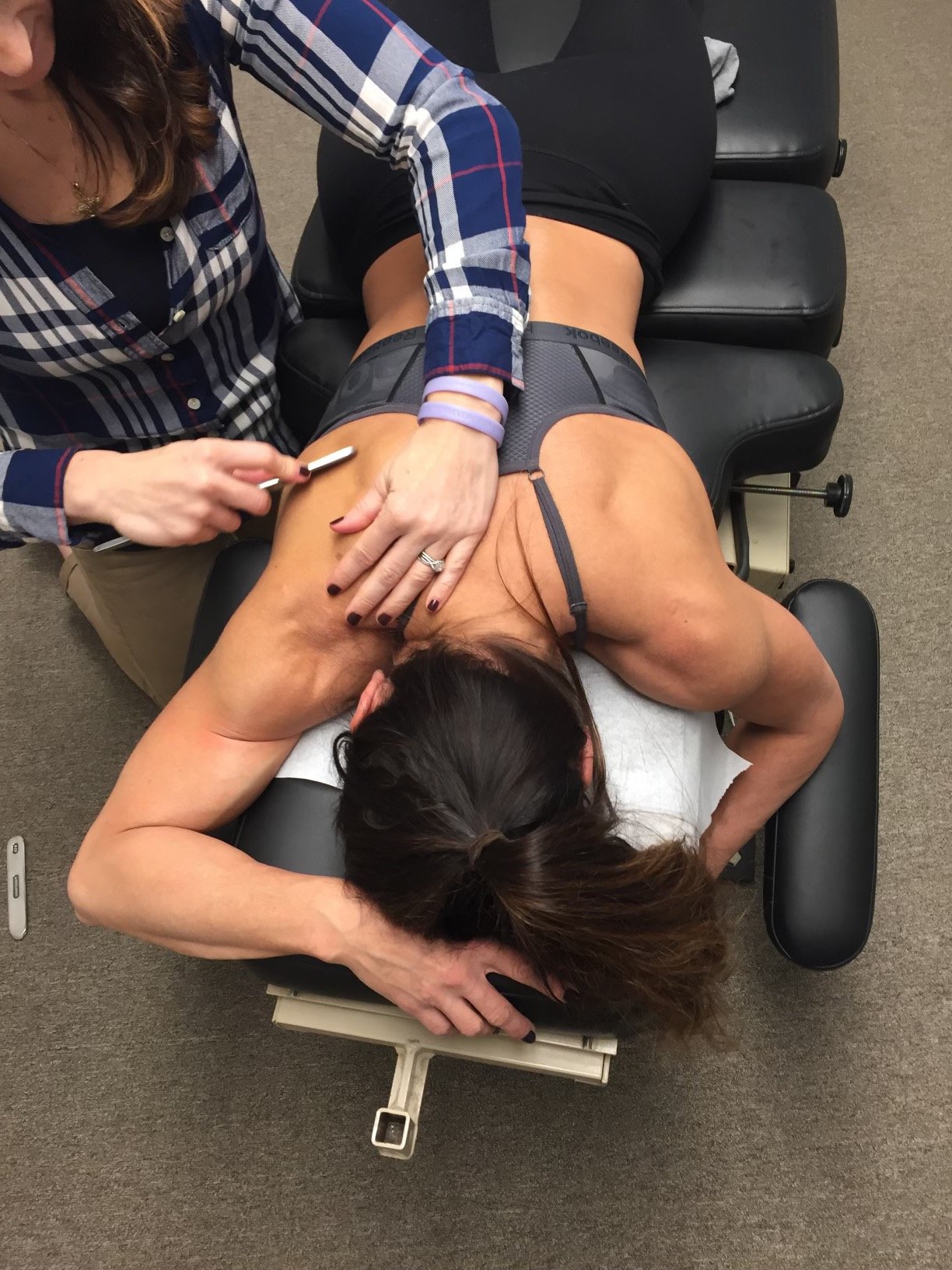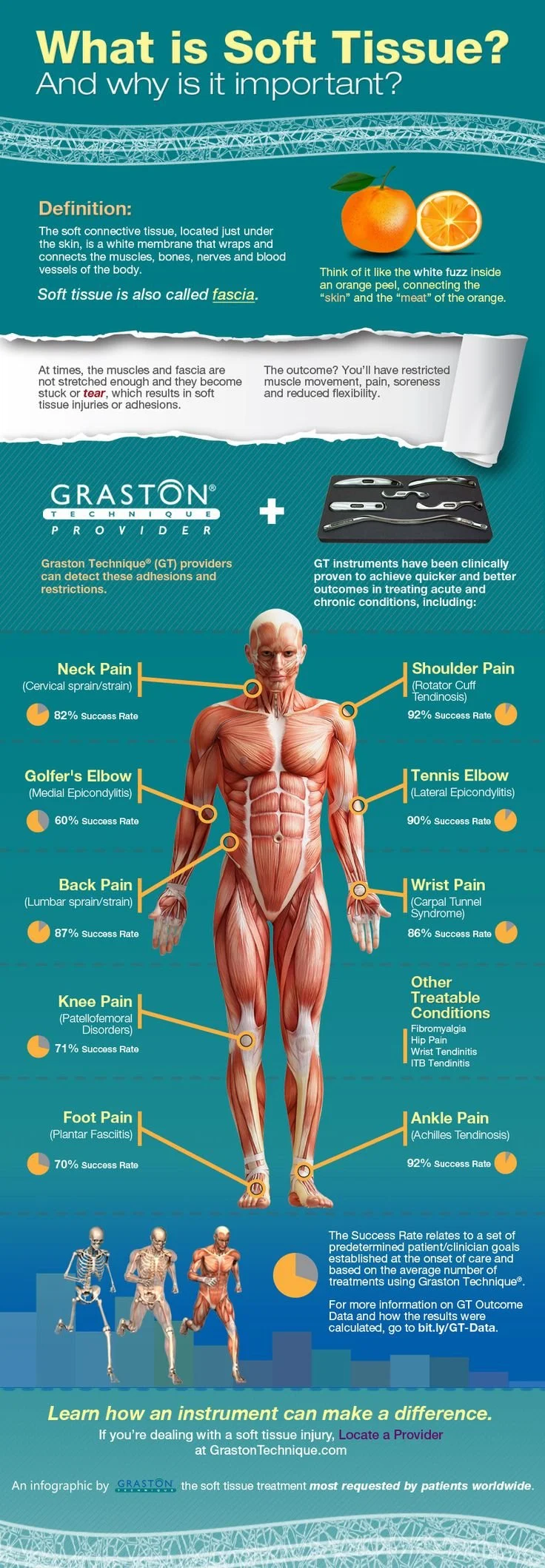Graston Technique
The Graston Technique (GT) is an innovative form of instrument-aided tissue mobilization that lets a clinician effectively break down the fascial restrictions and scars in order to promote healing. Healing and recovery of fibrous or scarred tissues is rather slow. This is primarily due to low blood supply across the fibrous tissue. The aim of the Graston Technique is to create micro-traumas at the damaged tissue in enhance healing. While this might seem counter-productive, it is not. The micro-trauma enhances inflammation – and thus, blood flow – to the area, and thereby helps the process of repair and remodeling. This technique requires a specially designed stainless steel instrument that helps find and treat problem areas with chronic inflammation or soft tissue fibrosis.
GT separates and breaks the cross-linked collagen in scar tissue. This is usually accomplished by stretching and splaying the muscle fibers and connective tissue components. To promote the natural healing process and remodeling of tissues, chiropractors slightly increase the temperature of skin, and GT increases the flow of blood to and from the affected tissues. GT increases the activity of cells in the region, which helps with tissue remodeling.
How does the Graston Technique work?
What does the Graston Technique help with?
Research and clinical data indicate that the Graston Technique is effective in the management of following conditions:
Shin splints
Tennis/golfer’s elbow
Rotator cuff tendinosis
Iliotibial Band Syndrome
Myofascial pain syndrome
Cervical sprain/strain
Lower back muscle strain or sprain
Achilles tendinosis
Carpal tunnel syndrome
Abductor pollicis longus tendonitis
Plantar fasciitis
Why is scar tissue problematic?
Scarring in musculoskeletal tissues is associated with:
Limiting the overall range of motion and flexibility of tissues.
Pain and discomfort on activity.
Higher risk of future injuries due to aggravated pressure and load on functional muscle fibers.
High risk of stiffness.
More than higher risk of developing premature osteoarthritis and other dysfunctional joint injuries.
What is the difference between scar tissue and other tissues?
Normal tissues appear as regular elongated, dense fibers running in similar directions like ligaments and tendons. Due to symmetrical alignment, the strength, power, and overall capacity of muscle component increases significantly.
Damaged or scarred tissues, in contrast, have a haphazard arrangement of muscle fibers along with non-contractile elements in between the contractile components. All these factors can directly compromise the strength and power of muscles, overall flexibility, and range of motion.
How is the instrument used?
The stainless steel instrument is used by skilled practitioner to identify the area of involvement. Next, the practitioner uses knowledge of musculoskeletal tissue anatomy and physiology to break up scar tissue, fibrous cords and realign muscle fibers, which enhances functional independence.
There may be some degree of discomfort during the procedure that should resolve spontaneously within a few days. Some patients may develop mild bruising, which is normal and resolves on its own. Due to symmetrical alignment, the strength, power, and overall capacity of muscle component increases significantly.
Damaged or scarred tissues, in contrast, have a haphazard arrangement of muscle fibers along with non-contractile elements in between the contractile components. All these factors can directly compromise the strength and power of muscles, overall flexibility, and range of motion.


